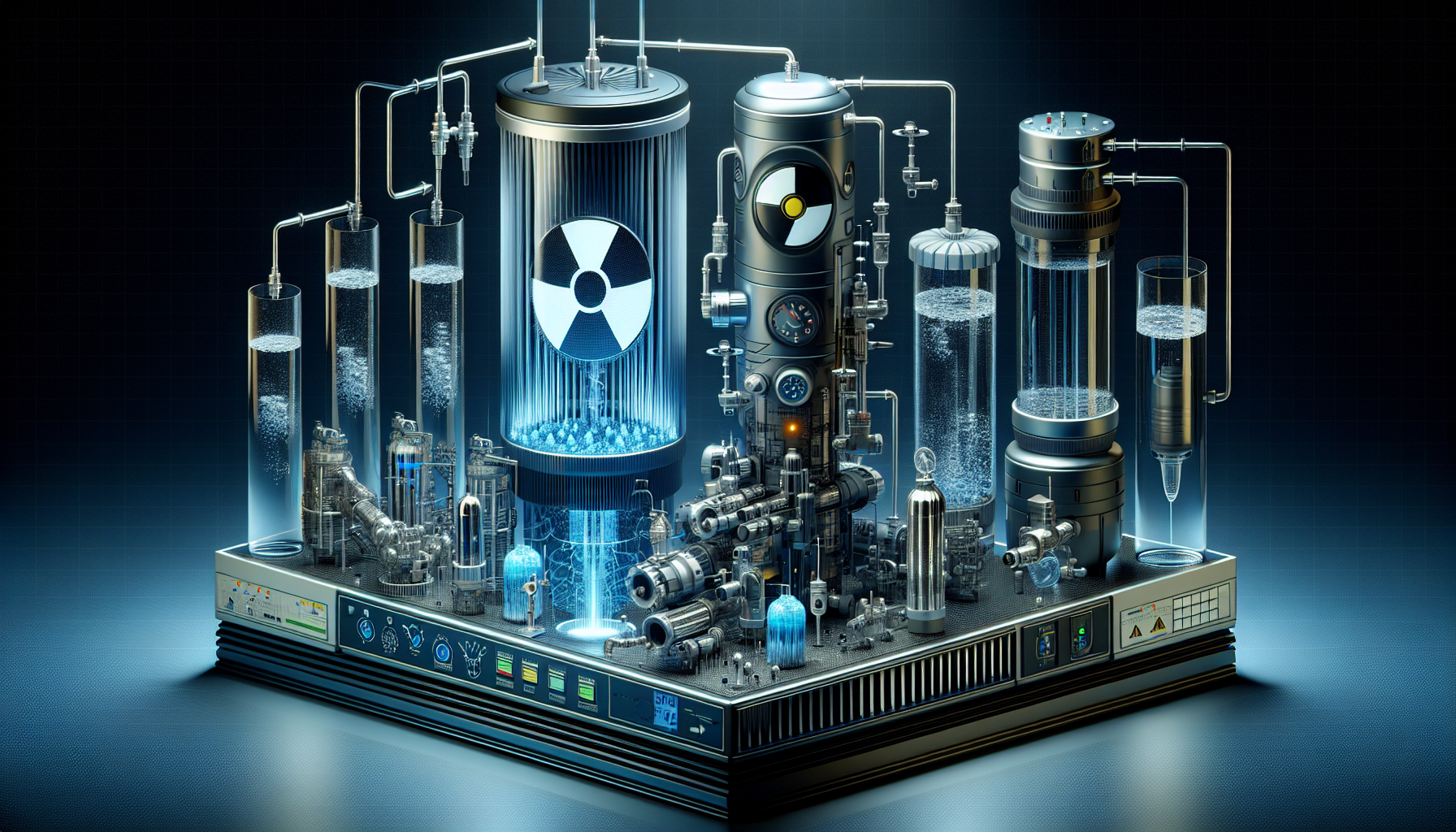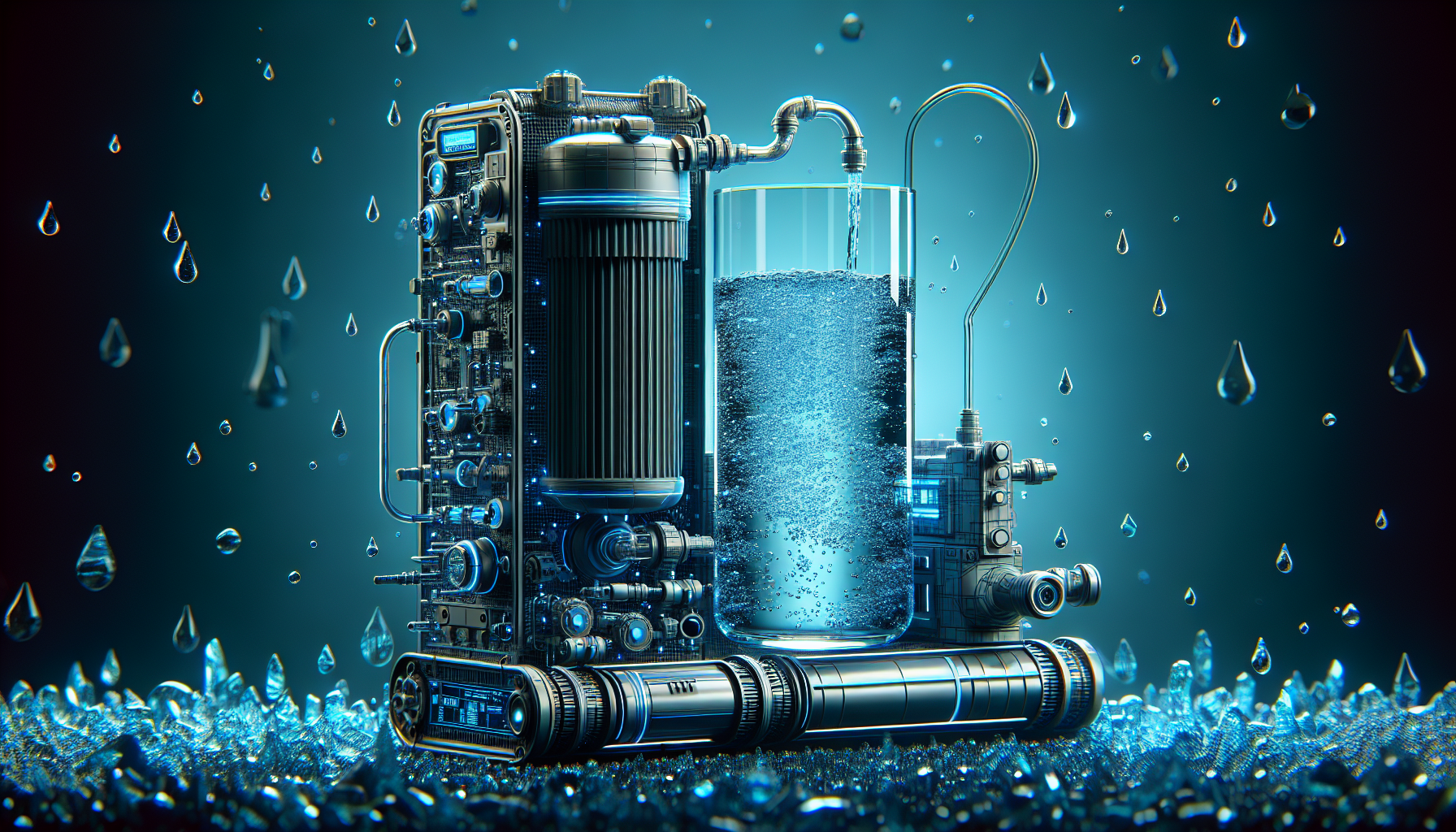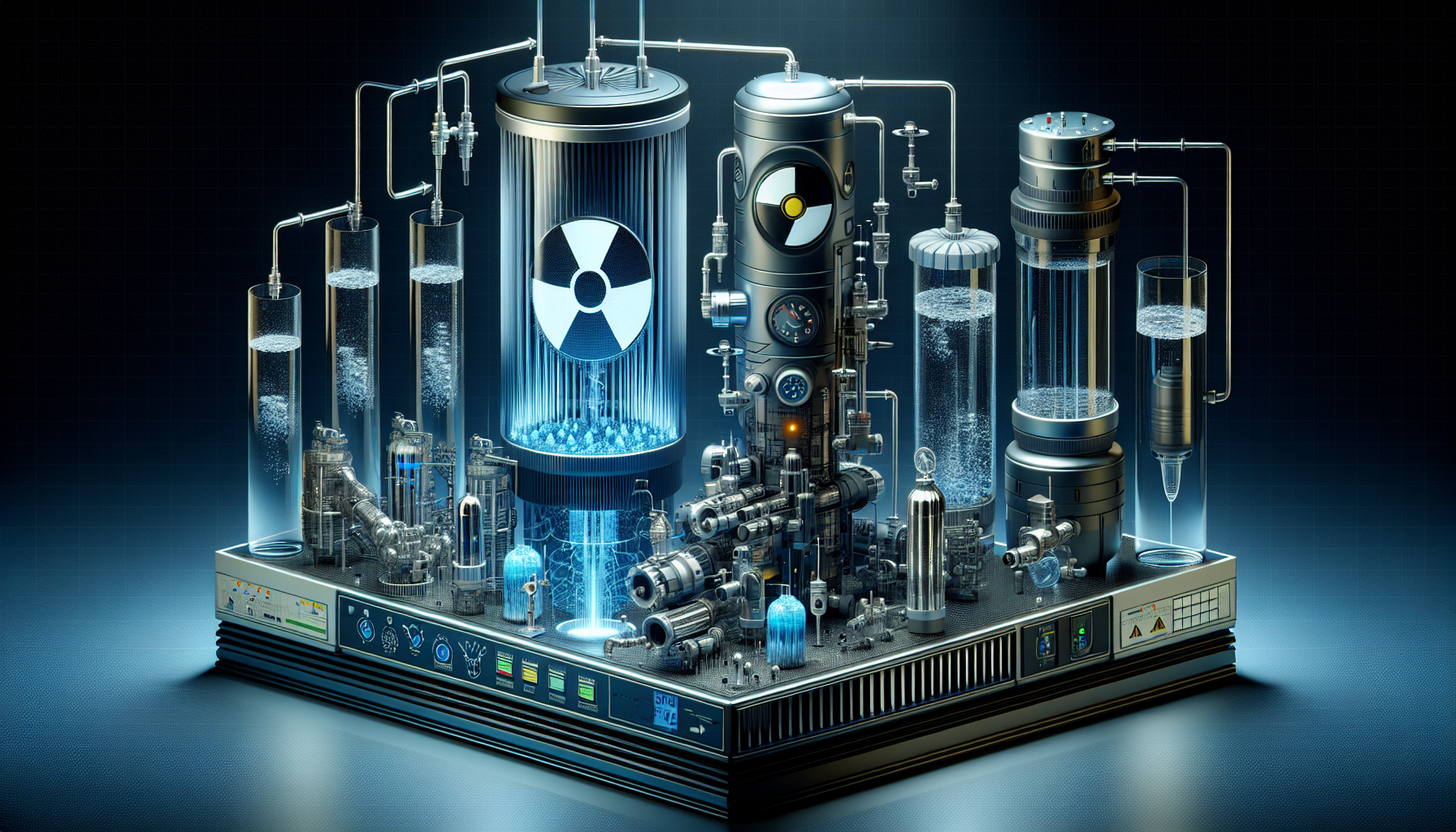Are you concerned about the presence of polonium-210 in your well water? In this article, we will explore various methods that you can use to effectively eliminate well water contamination by polonium-210. By implementing these solutions, you can ensure that your water is safe and free from this harmful radioactive element. So let’s dive in and discover the steps you can take to protect your health and the well-being of your loved ones.
Understanding Polonium-210 Contamination
What is Polonium-210?
Polonium-210 is a radioactive isotope that occurs naturally in the environment. It is a highly toxic substance that can enter well water through various sources. Polonium-210 emits alpha particles, which can cause significant damage to the body if ingested or inhaled. Understanding the sources and health risks associated with Polonium-210 contamination is crucial in ensuring the safety of well water.
Sources of Polonium-210 in Well Water
Polonium-210 can find its way into well water through various sources. One of the primary sources is the decay of uranium and radium deposits in the soil and rocks, which release Polonium-210 into groundwater. Human activities can also contribute to Polonium-210 contamination, such as improper disposal of radioactive waste, accidental spills, or leaks from mining and industrial processes. It is essential to identify these sources to effectively mitigate Polonium-210 contamination.
Health Risks Associated with Polonium-210
The ingestion or inhalation of Polonium-210 can pose serious health risks. It primarily targets the bones, liver, and kidneys, leading to cell damage and increasing the risk of developing cancer. Prolonged exposure to even low levels of Polonium-210 can have adverse effects on the immune system, fertility, and overall well-being. Identifying the potential health risks associated with Polonium-210 contamination emphasizes the need for proactive measures to ensure clean and safe well water.
Testing for Polonium-210 Contamination
Sampling Well Water
To assess the level of Polonium-210 contamination in well water, it is necessary to undertake proper sampling techniques. Sampling should be conducted from representative points in the well to obtain accurate results. It is advisable to utilize a professional water testing kit that includes instructions for collecting samples and preserving them appropriately. Sampling well water regularly enables early detection and effective remediation of Polonium-210 contamination.
Choosing a Reliable Testing Laboratory
After collecting well water samples, it is essential to select a reliable testing laboratory to analyze the samples for Polonium-210 contamination. Look for laboratories that specialize in radiochemical analysis and hold relevant accreditations. Accurate and timely results are critical in assessing the extent of Polonium-210 contamination and developing an appropriate course of action. Engaging with experienced professionals ensures reliable test results and enhances confidence in the remediation process.
Interpreting Test Results
Once the test results are obtained, it is crucial to interpret them correctly to make informed decisions. The test results will indicate the concentration of Polonium-210 in the well water, typically measured in picocuries per liter (pCi/L). Comparing the results with the recommended safe levels set by regulatory authorities and health organizations is essential. Understanding the test results will help determine the severity of Polonium-210 contamination and guide the selection of effective treatment methods.

Preventive Measures to Minimize Polonium-210 Contamination
Banning Tobacco Use near Wells
Tobacco plants have a remarkable ability to accumulate Polonium-210 from the soil. In areas where tobacco cultivation is prevalent, there is a higher likelihood of Polonium-210 contamination in well water. Implementing a ban on tobacco use near wells can significantly reduce the chances of contamination. Educating the community about the risks associated with tobacco cultivation and encouraging alternative crops or smoking cessation can further support this preventive measure.
Implementing Protective Well Caps
Protective well caps act as a barrier, preventing external contaminants from entering the well. It is important to ensure that well caps are tightly sealed and made of suitable materials to withstand environmental conditions. Regular inspections and maintenance of well caps are necessary to maintain their effectiveness. Implementing protective well caps is a proactive measure in minimizing Polonium-210 contamination by preventing surface runoff, debris, or other pollutants from entering the well.
Regular Well Inspections
Regular inspections of wells are crucial to identify and address any potential sources of Polonium-210 contamination. A comprehensive inspection should involve checking for any visible damage or leaks, assessing the condition of well casings and screens, and confirming that seals and connections are intact. Timely identification and repair of any defects or vulnerabilities in the well system can significantly reduce the chances of Polonium-210 contamination in well water.
Techniques for Eliminating Polonium-210 Contamination
Reverse Osmosis Filtration
Reverse osmosis (RO) filtration is an effective method for removing Polonium-210 from well water. This filtration process uses a semipermeable membrane that allows water molecules to pass through while blocking contaminants, including Polonium-210. RO systems are available for both residential and commercial use, and they can be installed at the point of use or as a whole-house system. Regular maintenance, including filter replacements, ensures optimum performance of the RO system.
Ion Exchange Resin Systems
Ion exchange resin systems can also effectively remove Polonium-210 from well water. These systems work by replacing the Polonium-210 ions with harmless ions, such as chloride or sulfate. Through this process, the resin absorbs the Polonium-210, removing it from the water. Ion exchange resin systems are available in different sizes and capacities, making them suitable for various applications. Regular replacement of the resin bed and adequate system maintenance are essential in achieving optimal results.
Distillation
Distillation is another technique utilized in eliminating Polonium-210 contamination. In this process, water is boiled, and the resulting steam is condensed, leaving behind impurities, including Polonium-210. Distillation units can be installed as standalone systems or incorporated into larger water treatment setups. It is crucial to monitor the distillation process to ensure the removal of Polonium-210 and regular cleaning to prevent the buildup of contaminants.

Professional Water Treatment Services
Finding a Certified Water Treatment Expert
When dealing with Polonium-210 contamination, seeking the assistance of a certified water treatment expert is crucial. Look for professionals who specialize in well water treatment and have experience in dealing with radioactive contaminants. Certified experts possess the knowledge and expertise to assess well water quality, recommend suitable treatment methods, and ensure compliance with regulatory standards. Their guidance ensures effective treatment and minimizes the risk of future contamination.
Discussions about Polonium-210 Removal
Engaging in open discussions with water treatment experts about Polonium-210 removal is essential to understand the available options. Experts can provide insights into different treatment methods, their advantages, and limitations. Discussing the specific characteristics of the well water, such as pH levels and temperature, allows for tailored treatment solutions. Clear communication with water treatment professionals helps in making informed decisions regarding Polonium-210 removal from well water.
Costs and Maintenance Considerations
Before implementing any water treatment system for Polonium-210 removal, it is essential to consider the associated costs and maintenance requirements. Treatment systems vary in price depending on their size, capacity, and complexity. Additionally, ongoing maintenance, including filter replacements, resin bed changes, or system servicing, should be factored in. Proper budgeting and understanding the long-term costs and maintenance obligations help in selecting the most suitable water treatment system.
Alternative Methods and Remedies
Natural Remediation Techniques
Natural remediation techniques can supplement conventional treatment methods in reducing Polonium-210 contamination. Phytoremediation, for example, involves using specially selected plants to absorb and accumulate radioactive contaminants from the soil and water. Implementing natural remediation techniques requires careful consideration of the site conditions, including soil type, hydrogeology, and availability of suitable plants. Integrating these techniques can enhance the overall effectiveness of Polonium-210 removal efforts.
Chemical Remediation Options
Chemical remedies can also be used to mitigate Polonium-210 contamination in well water. Agents such as iron salts, co-precipitation agents, or reducing agents can be added to facilitate the removal of Polonium-210 from water through precipitation or other chemical reactions. It is crucial to consult with water treatment experts or professionals knowledgeable in the field to ensure the safe and effective use of chemical remediation options.
Effects of pH and Temperature
Factors such as pH levels and temperature can influence the effectiveness of Polonium-210 removal methods. Polonium-210 tends to be more soluble in acidic water, making pH adjustment an important consideration. Additionally, higher temperatures can increase the mobility and solubility of Polonium-210, affecting removal efficiency. Understanding the impact of these factors is crucial when selecting and optimizing treatment solutions to address Polonium-210 contamination effectively.

Governmental Regulations and Standards
Environmental Protection Agency (EPA) Guidelines
The Environmental Protection Agency (EPA) sets guidelines and standards for safe drinking water. These regulations include maximum contaminant levels (MCLs) for various substances, including Polonium-210. Staying informed about the EPA guidelines ensures compliance and helps in determining appropriate action levels for Polonium-210 removal. In cases where EPA guidelines are not available, seeking advice from water treatment experts or local health agencies is essential.
National Sanitation Foundation (NSF) Certifications
The National Sanitation Foundation (NSF) provides certifications for water treatment products and systems. NSF certifications indicate that the products meet certain industry standards and have undergone rigorous testing and evaluation. When selecting water treatment systems for Polonium-210 removal, look for NSF certifications to ensure the quality and performance of the chosen products. These certifications provide peace of mind and assurance of effective treatment.
Local and State Regulations
In addition to federal regulations, local and state regulations may exist concerning well water quality and Polonium-210 contamination. Understanding and complying with these regulations are paramount in maintaining the safety of well water. Local health departments and water management authorities can provide information on specific regulations and help in addressing any concerns related to Polonium-210 contamination.
Monitoring and Maintenance
Regular Water Testing Schedule
Establishing a regular water testing schedule is crucial in monitoring Polonium-210 contamination. Routine testing allows for early detection of any rise in contamination levels and prompt implementation of remedial measures. The frequency of testing may vary depending on various factors, such as well location, history of contamination, or changes in land use. Adhering to a consistent testing schedule ensures the ongoing safety and quality of well water.
Replacing Filters and Resins
When utilizing treatment systems like reverse osmosis or ion exchange, regular replacement of filters and resins is necessary to maintain their effectiveness. Over time, filters and resins can become saturated or clogged with contaminants, compromising the removal of Polonium-210. Following the manufacturer’s recommendations for filter replacements and resin bed changes is essential to ensure optimal performance and maximum removal efficiency.
Importance of System Maintenance
Proper maintenance of water treatment systems is crucial to maintaining their functionality and prolonging their lifespan. Regular system maintenance includes cleaning, servicing, and inspecting all components to ensure they are functioning correctly. It is important to address any leaks, malfunctions, or unusual noises promptly. Engaging the services of qualified professionals for system maintenance ensures that any potential issues are identified and resolved before they lead to a compromise in Polonium-210 removal.

Educating Communities and Promoting Awareness
Hosting Public Information Sessions
Hosting public information sessions is a proactive way to educate communities about the risks associated with Polonium-210 contamination and promote awareness of preventive measures and removal techniques. These sessions can be conducted by water treatment experts, health agencies, or local organizations, encouraging public participation and providing a platform for questions and discussions. By enhancing community knowledge, it is possible to foster a sense of responsibility towards maintaining safe and contaminant-free well water.
Distributing Educational Materials
Distributing educational materials, such as brochures, pamphlets, or fact sheets, can also help raise awareness about Polonium-210 contamination. These materials can provide essential information about the sources, health risks, and prevention strategies related to Polonium-210. Conveniently placing educational materials in community centers, libraries, or within utility bill envelopes ensures accessibility to a wider audience, empowering individuals to take proactive measures.
Collaborating with Health Agencies
Collaborating with local health agencies can play a significant role in educating communities and promoting awareness about Polonium-210 contamination. Health agencies are often equipped with resources and expertise necessary for public outreach. By partnering with health agencies, water treatment experts can leverage their knowledge and credibility to deliver accurate and up-to-date information to communities. This collaboration fosters a comprehensive approach towards addressing Polonium-210 contamination.
Conclusion
Taking action to ensure safe drinking water is essential when it comes to Polonium-210 contamination. Understanding the sources, health risks, and preventive measures associated with Polonium-210 contamination is the first step. Through regular water testing, selecting reliable testing laboratories, and interpreting test results accurately, the extent of contamination can be identified. Implementing preventive measures and using effective treatment techniques such as reverse osmosis and ion exchange can eliminate Polonium-210 contamination. Seeking professional water treatment services, considering alternative methods and remedies, and complying with governmental regulations and standards further contribute to ensuring the safety of well water. Regular monitoring, maintenance, and public education play a vital role in continuous improvement and maintaining best practices. By taking these comprehensive steps, individuals and communities can proactively mitigate Polonium-210 contamination and achieve safe, reliable well water for everyone.


